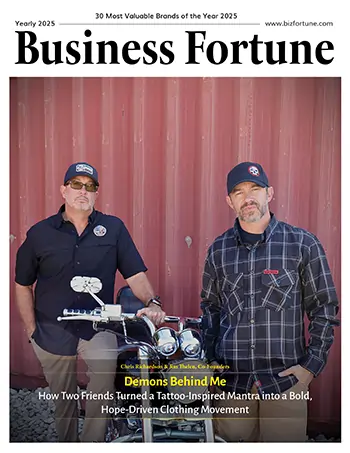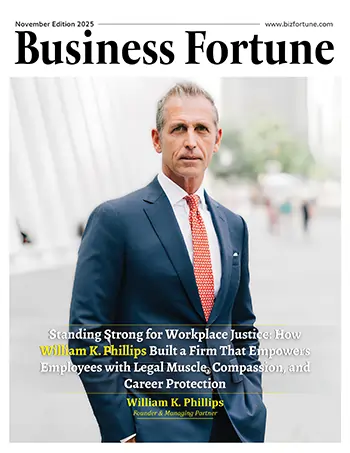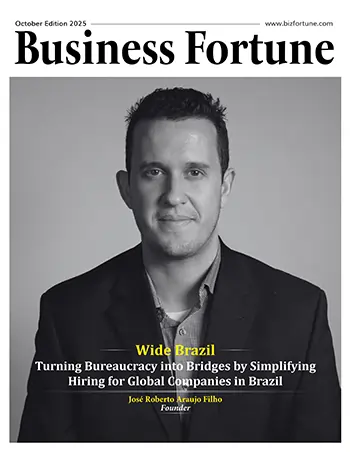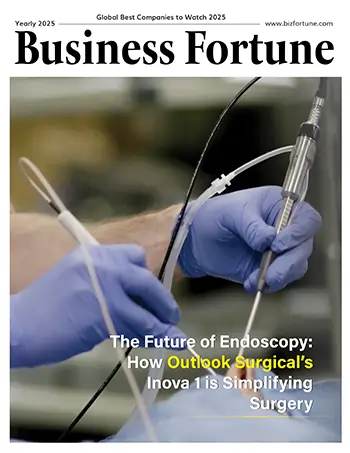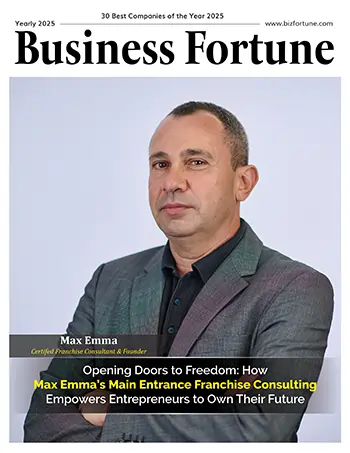Home Industry Real Estate Transforming Land Parcels with...
Transforming Land Parcels with Digital Disruption: Rohit Singh Chauhan’s Cutting-Edge Approach to Site Analysis and Development Potential
Real Estate

Business Fortune
24 June, 2025
~Zoe Hodgson
In the fast-paced and multifaceted world of real estate, innovation isn’t just a competitive edge. It’s the driving force behind meaningful change. Rohit Singh Chauhan, an accomplished Senior Associate of Acquisition and Development at Tishman Speyer, exemplifies this principle. Dedicated to merging cutting-edge technology with visionary urban development, Rohit is already making a mark in an industry that demands bold thinking and precise execution.
A graduate of the prestigious Massachusetts Institute of Technology (MIT), Rohit’s world-class education underpins his mission to shape the cities of tomorrow. His expertise and poise have earned the respect of industry leaders.
Rohit's remarkable success in real estate development directly results from his ability to merge two critical areas seamlessly.
This unique blend of expertise allows Rohit to approach challenges from a creative and data-driven perspective, ensuring his projects are visually appealing, financially viable, and sustainable.
By integrating AI and generative algorithms into site analysis, Rohit unlocks untapped potential and delivers projects that seamlessly align with financial, environmental, and community interests.
“I’m always looking to make processes more efficient, whether through technology or simply finding smarter workflows,” Rohit explains.
This mindset has driven him from his roots in Bhopal, India, to the forefront of global real estate development, reshaping how cities are imagined and built.
His story is one of passion, innovation, and a deep commitment to creating meaningful spaces serving people and the planet. Rohit’s work exemplifies the transformative power of blending technology with creativity in the built environment.
The Old Way vs. The Rohit Way: Revolutionizing Real Estate Analysis
Site analysis in real estate has traditionally been slow and labor-intensive, with teams spending weeks or months evaluating zoning, infrastructure, and market demand through outdated tools. For Rohit, this inefficiency was an opportunity for disruption.
“Land parcel analysis was a slow, repetitive process that relied heavily on manual tools,” Rohit recalls from his time at Godrej Properties.
“It was clear to me that technology could not only streamline this but also uncover insights that were previously out of reach.”
His innovative approach, now known as "The Rohit Way," has transformed workflows at Tishman Speyer.
Rohit Singh Chauhan demonstrated his problem-solving skills during his thesis, building an algorithm from scratch without prior coding experience.
Chris Whittier, Senior Director of Development at Tishman Speyer, reveals: "His education at MIT gave him a strong quantitative skill set. This ability allows him to conceptualize innovative, high-quality designs and ensure those designs are financially sustainable and strategically viable.”
He adds: “One of the awe-inspiring things Rohit has done while working with us is to apply a unique supply chain concept to real estate using a complex algorithmic approach.
“He has an innate ability to tackle new challenges with determination, which sets him apart as an innovative leader in real estate development.”
By blending technology with human expertise, Rohit is revolutionizing real estate analysis and proving that the future belongs to innovators.
A Real-World Impact: Revolutionizing Site Analysis at Godrej Properties and Redefining Real Estate
At Godrej Properties, Rohit developed leading-edge tools that transformed workflows. A standout achievement was introducing a generative AI tool for evaluating land parcels. In Pune, while considering multiple sites for residential development, Rohit’s algorithm helped evaluate each site based on zoning infrastructure. It projected demand, reducing decision-making time from weeks to just days.
“The algorithm didn’t just speed up the process. It highlighted inefficiencies we might have missed, like underutilized land, and suggested layout optimizations that increased the buildable area by 15%, which could be an additional 100 residential units,” Rohit says.
This success led to the tool being scaled across Godrej Properties, becoming a core part of their decision-making framework for new deals. This was later expanded into a fully-fledged R&D project by the company to explore further avenues for implementing his approach.
Rohit’s leadership also contributed to multiple accolades, including the Iconic Project of the Year for Godrej Boulevard and Godrej Parkridge at the Realty+ Conclave, and the World Landscape Architect Award for Godrej Rivergreens Township.
His international work at WS Atkins (now AtkinsRealis) earned global recognition, including the World’s Best Mixed-Use Development 2022 and Best Mixed-Use Development – Arabia 2022 by the International Property Awards for Qetaifan Island North project in Qatar.
Rohit’s success is rooted in his relentless pursuit of innovation. Whether optimizing workflows or integrating AI, he consistently delivers transformative solutions that redefine real estate development.
By blending architectural expertise with forward-thinking strategies, Rohit is not just a leader; he’s the architect of a smarter, more sustainable future in the built environment.
Applying AI to Large-Scale Developments in the U.S.
Rohit’s innovative approach has made waves in India and the U.S., and he now applies his expertise at Tishman Speyer.
After completing his Master of Science in Real Estate Development at MIT, he applied his digital innovation skills to large-scale developments, such as the Enterprise Research Campus in Allston, Massachusetts.
This $1.4 billion mixed-use project, blending life sciences offices, residential units, a hotel, and public spaces, exemplifies the scope and complexity of U.S. developments.
Despite the different scales, Rohit’s digital innovation has been equally transformative. He focused on implementing comprehensive budget monitoring and AI market tracking tools for the Enterprise Research Campus to inform the team’s decision-making. “The granular information from these sources helped the team run scenarios and inform the key financing and programming decisions for them,” says Rohit.
“Leveraging these digital tools empowered our decision making and thus reinforced our ability to deliver optimized financial returns with community impact.” “It’s about finding that sweet spot where financial viability meets community needs,” he adds.
Rohit’s digitally driven approach is a game-changer, enabling more innovative, more efficient decisions that align development goals with broader societal values.
Beyond Efficiency: The Broader Impact of AI
While speed and precision are key benefits of Rohit’s AI-driven approach, the technology offers even greater advantages. It is critical in fostering sustainability by minimizing waste and optimizing resource use.
“At Tishman Speyer, sustainability is a core value,” Rohit says. “AI helps us design layouts that reduce energy consumption, enhance green spaces, and support long-term environmental goals.”
Moreover, he believes that AI empowers teams to make data-driven decisions, reducing costly errors: “Every piece of data from zoning laws to market trends feeds into the model,” he explains.
“This ensures our choices are grounded in evidence, not just intuition.”
James Scott, Director of Industry Relations at the Center for Real Estate at MIT highlights Rohit Singh Chauhan's exceptional drive: "The work he produced was fantastic. If he had pursued it further, it could have become a solid foundation for advanced analytics or even a Ph.D. Challenges or new processes do not inhibit him."
This relentless determination and innovative mindset position Rohit as a transformative leader poised to redefine the future of real estate development.
Rahul Dubey is the General Manager – Design & Development for Sobha Realty. He has known Rohit for nearly seven years and they have worked together on a number of projects.
He says: “Rohit is honest, generous, collaborative, respectful & kind. He encourages others & supports them in time of need. He takes initiative & ownership and shows exemplary work ethics, through his integrity, discipline, responsibility, accountability, teamwork, loyalty, professionalism, fairness, motivation and adaptability.”
Overcoming Challenges and Leading with Collaboration
Integrating AI into real estate is no easy feat, and Rohit knows the challenges firsthand: “Real estate has traditionally been a conservative industry. Getting teams to trust and adopt AI tools requires a cultural shift,” he says.
James Scott, Director of Industry Relations at the Center for Real Estate at MIT is one of Rohit’s mentors.
He reveals: “Rohit is setting a powerful example of what it takes to lead in this ever-evolving industry. His work is a testament to his expertise and a blueprint for the next generation of real estate leaders.
“Rohit’s ability to unite people and align different project components is invaluable. Real estate development isn’t just about individual elements like design or finances—it’s about weaving them together and leading a team effectively. That’s his greatest strength, which many can learn and benefit from.”
To overcome the challenges of integrating AI into real estate, Rohit engages stakeholders early, demonstrating how AI simplifies tasks and enhances outcomes: “It’s not about replacing expertise, it’s about enhancing it,” he explains. Rohit’s ability to drive meaningful change in real estate clearly indicates his potential to shape the industry's future, and his impact will undoubtedly inspire the next wave of leaders to follow his path.
The Future of AI in Real Estate: A Legacy of Innovation
Rohit is at the forefront of transforming real estate, harnessing the power of AI to automate processes, predict market trends, and tackle pressing issues like housing affordability.
“AI has the potential to make housing more accessible by optimizing costs and identifying underutilized opportunities,” Rohit explains.
“It’s not a silver bullet, but a powerful tool in addressing some of the industry’s most pressing issues.”
He envisions a future where AI creates smarter, more sustainable, and affordable real estate solutions: “Real estate is about more than just buildings—it’s about creating value in every sense of the word.”
Rohit concludes: “AI allows us to do that in ways we never could before. The technology is here, and it’s up to us to use it responsibly and creatively.”
In an industry ripe for disruption, Rohit’s vision is proving that the future of real estate lies at the intersection of technology and impact. And as he continues to push boundaries, one thing is clear. He’s just getting started.




























